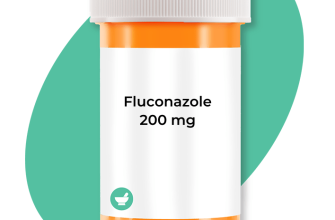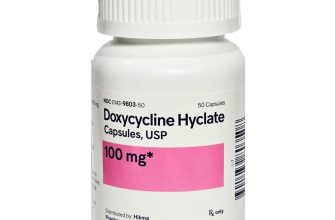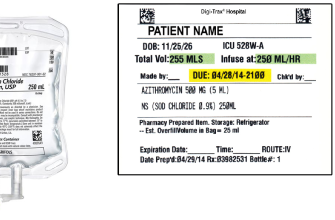To effectively use an albuterol inhaler, first hold the inhaler upright and remove the cap. Check the counter on the inhaler; if it indicates low doses left, it’s time to refill your prescription. Shake the inhaler, which ensures that the medication is well mixed for optimal delivery.
Next, breathe out gently to empty your lungs. Position the inhaler either directly in your mouth or about two inches away from your mouth, depending on your comfort. While inhaling slowly and deeply, press down on the inhaler to release a dose. Continue to breathe in while the medicine enters your lungs, ensuring maximum absorption.
After inhaling the medication, hold your breath for about 10 seconds to allow the medicine to settle in your airways. Exhale slowly. If you’re scheduled to take another puff, wait at least 30 seconds before repeating the process. This technique not only enhances the effectiveness of the medication but also helps manage symptoms more efficiently.
Lastly, clean the inhaler regularly to prevent blockages and ensure consistent performance. With proper technique and maintenance, you’ll make the most out of your albuterol inhaler, keeping your breathing smooth and controlled.
- Albuterol Inhaler Demonstration
- Understanding Albuterol and Its Uses
- Types of Albuterol Inhalers Available
- Preparing Your Albuterol Inhaler for Use
- Checking Your Dose
- Proper Positioning
- Step-by-Step Guide to Using Your Inhaler
- Preparation
- Using the Inhaler
- Common Mistakes When Using an Albuterol Inhaler
- Incorrect Breathing Technique
- Missed Doses and Refills
- How to Clean and Maintain Your Inhaler
- Steps for Cleaning Your Inhaler
- Proper Storage Tips
- Signs That Indicate You Need a New Inhaler
- 1. Expiration Date
- 2. Unusual Sounds or Changes
- 3. Decreased Effectiveness
- 4. Physical Damage
- 5. Quantity of Doses Left
- When to Consult Your Doctor About Inhaler Use
- Recognizing Worsening Symptoms
- Changes in Your Condition
Albuterol Inhaler Demonstration
Hold the inhaler upright and remove the cap from the mouthpiece. Check that the inhaler is clean and free of debris. Shake the inhaler well for about five seconds to mix the medication properly.
Next, take a deep breath and exhale fully to empty your lungs. Position the inhaler about one to two inches away from your mouth, or place the mouthpiece directly in your mouth, creating a tight seal with your lips.
As you start to inhale slowly through your mouth, simultaneously press down on the canister to release a dose of albuterol. Continue to breathe in steadily for three to five seconds, ensuring that the medication reaches deep into your lungs.
After inhaling the medication, hold your breath for ten seconds. This allows the medication to settle in your airways. Exhale slowly through your nose or mouth.
Wait for at least 30 seconds before taking another puff if directed by your healthcare provider. If you’re using a spacer, attach it to the inhaler before starting the process to help improve medication delivery.
Finally, always replace the cap after use. Clean the inhaler as instructed, typically once a week to avoid clogging. Regularly check the expiration date of your inhaler to ensure it’s safe to use.
Understanding Albuterol and Its Uses
Albuterol acts as a bronchodilator, facilitating respiratory function by relaxing the muscles around the airways. Primarily prescribed for conditions like asthma and chronic obstructive pulmonary disease (COPD), it quickly alleviates symptoms such as wheezing and shortness of breath. Health professionals recommend using an albuterol inhaler during sudden asthma attacks or before physical activities that may induce symptoms.
This medication comes in various forms, including metered-dose inhalers (MDIs) and nebulizer solutions. Patients using MDIs should shake the inhaler, exhale fully, and then inhale deeply while pressing down on the canister. Follow up with a slow, deep breath to ensure effective delivery to the lungs. Nebulizers transform the medication into a mist, providing a suitable option for those who struggle with inhalers.
Dosage varies based on the severity of the condition and the individual patient’s response. Typically, adults may use the inhaler every four to six hours, while children may require adjustments based on their needs. Consistent follow-ups with healthcare providers are essential to monitor the effective use and adjust the treatment plan as necessary.
Side effects, while generally mild, may include increased heart rate or jitteriness. Staying informed about potential reactions can help manage any adverse effects swiftly. If symptoms persist or worsen, contacting a healthcare professional is crucial.
Understanding how and when to use albuterol enhances its benefits and promotes better respiratory health. Keep the inhaler accessible for emergencies, and don’t hesitate to discuss any concerns with a trusted healthcare provider.
Types of Albuterol Inhalers Available
Albuterol inhalers come in several types, each designed for specific needs and situations. Metered Dose Inhalers (MDIs) are the most common. They deliver a precise dose of medication in a quick puff. Users typically need to coordinate inhalation with pressing the canister for optimal results.
Dry Powder Inhalers (DPIs) offer another option, utilizing a breath-activated mechanism. These inhalers require users to inhale forcefully to dispense the medication, making proper technique essential for effectiveness.
Respimat Soft Mist Inhalers provide a gentle mist of albuterol, allowing for a slower and deeper inhalation. This can benefit those who may have difficulty with traditional inhalers.
For users with more severe respiratory conditions, nebulizers transform liquid medication into a fine mist, allowing for inhalation over a longer period. This method can be particularly useful during acute asthma attacks or for those unable to use traditional inhalers.
Consulting with a healthcare provider helps determine which type of albuterol inhaler is most suitable based on individual preferences, respiratory conditions, and lifestyle. Each type carries specific dosage instructions, ensuring proper usage leads to effective symptom management.
Preparing Your Albuterol Inhaler for Use
Shake the inhaler well before each use. This ensures that the medication is evenly mixed and ready for effective delivery. Hold the inhaler upright and remove the cap from the mouthpiece.
Checking Your Dose
If your inhaler has a dose counter, check it to confirm how many doses remain. If you notice it’s low, consider obtaining a refill. Avoid waiting until it runs out, as timely access to medication is critical.
Proper Positioning
Position the inhaler about 1 to 2 inches away from your mouth. Alternatively, you can use a spacer, which helps enhance medication delivery. If using a spacer, attach it securely to the inhaler.
Relax and exhale gently, clearing your lungs before inhaling the medication. This will allow for better absorption. Press down on the inhaler to release the medication as you inhale slowly and deeply. Hold your breath for about 10 seconds to maximize the effect, then exhale slowly.
After use, rinse your mouth with water to prevent irritation. Replace the cap on your inhaler to keep the mouthpiece clean and ready for your next use. Regularly check your inhaler for any blockages, and clean it according to the manufacturer’s instructions to maintain its function.
Step-by-Step Guide to Using Your Inhaler
Hold your albuterol inhaler upright and shake it well. This ensures the medication inside is mixed properly. Take off the cap from the mouthpiece and inspect it for any debris before use.
Preparation
Stand or sit up straight to open your airways. Breathe out fully to empty your lungs. This prepares you for a deeper inhalation of the medication.
Using the Inhaler
Place the inhaler in your mouth, between your teeth, and close your lips around it. As you start to breathe in slowly, press down on the canister to release the dose. Keep breathing in deeply for 3 to 5 seconds, allowing the medicine to reach deep into your lungs. After you’ve held your breath for about 10 seconds, exhale gently through your mouth.
| Step | Action |
|---|---|
| 1 | Shake the inhaler well. |
| 2 | Exhale completely. |
| 3 | Place the inhaler in your mouth. |
| 4 | Press the canister while inhaling. |
| 5 | Hold your breath for 10 seconds. |
| 6 | Exhale gently. |
If you have been prescribed multiple puffs, wait at least 30 seconds before taking the next one. Rinse your mouth afterward to prevent irritation. Always replace the cap on the inhaler to keep it clean and functional. Store it at room temperature and avoid extreme temperatures.
Common Mistakes When Using an Albuterol Inhaler
Ensure the inhaler is correctly shaken before use. This helps mix the medication properly, delivering the right dose. Skipping this step can lead to insufficient medication being inhaled.
Do not forget to remove the cap and check for debris before using the inhaler. A clean mouthpiece ensures smooth delivery of medicine. Always inspect the device for damage; a compromised inhaler may not function correctly.
Incorrect Breathing Technique
Inhale deeply and slowly while pressing down on the inhaler. Many users rush this step, which affects the medication’s effectiveness. A slow inhalation allows the medicine to reach the lungs more efficiently.
Also, try to hold your breath for about 10 seconds after inhaling. This practice allows the medication to settle in the airways. Exhaling too quickly can result in loss of medicine.
Missed Doses and Refills
Keep track of your medication supply. Delaying refills can leave you without the necessary doses during asthma attacks. Use a calendar or a reminder app to ensure timely refills.
Avoid using the inhaler more frequently than prescribed. This may indicate that the asthma isn’t well-controlled and requires a reevaluation. Regular follow-ups with your healthcare provider can help adjust your treatment plan effectively.
Implementing these simple adjustments can enhance the effectiveness of your albuterol inhaler and improve your overall respiratory health.
How to Clean and Maintain Your Inhaler
Clean your inhaler at least once a week to ensure optimal performance. Begin by removing the canister from the mouthpiece. Rinse the mouthpiece under warm water for 30 seconds. Avoid submerging the canister, as it can damage the device.
Steps for Cleaning Your Inhaler
- Remove the canister and cap.
- Rinse the mouthpiece with warm water.
- Shake off any excess water.
- Let the mouthpiece air dry completely.
- Reinsert the canister and cap once dry.
Check your inhaler for signs of damage regularly. If you notice anything unusual, replace it promptly to maintain effectiveness.
Proper Storage Tips
- Keep your inhaler at room temperature.
- Avoid exposure to high heat or moisture.
- Store in a protective case if possible.
Label your inhaler with the date of purchase. Most inhalers have a shelf life of about 12 months after opening. Dispose of any expired inhalers responsibly.
Regular maintenance keeps your inhaler ready when you need it. Follow these cleaning tips, and stay on top of your inhaler’s condition for the best results.
Signs That Indicate You Need a New Inhaler
Check your inhaler regularly, as several signs suggest it may be time for a replacement.
1. Expiration Date
- Always ensure you check the expiration date on your inhaler. If it has expired, it’s time to get a new one.
- Expired inhalers may not deliver the proper dosage and can compromise your health.
2. Unusual Sounds or Changes
- Listen for any unusual sounds when using your inhaler, such as a rattling noise. This may indicate that the device is damaged.
- Notice any changes in the spray pattern. If it seems weak or inconsistent, consider replacing it.
3. Decreased Effectiveness
- If you find yourself needing to use your inhaler more frequently than usual, it might be less effective.
- Discuss any increase in symptoms or decreased relief with your healthcare provider.
4. Physical Damage
- Inspect your inhaler for signs of physical damage, such as cracks or dents. Any visible issues can impair its function.
- Ensure the mouthpiece is clean and free of blockages. If it cannot be cleaned effectively, replacement is necessary.
5. Quantity of Doses Left
- Count the number of doses remaining. If you are approaching the end, be proactive and obtain a new inhaler.
- Keep track of refills and avoid waiting until the last moment.
By staying vigilant about these signs, you can ensure that your inhaler is always ready to support your breathing needs. Regular checks and timely replacements significantly contribute to managing respiratory conditions effectively.
When to Consult Your Doctor About Inhaler Use
If you notice that your albuterol inhaler is becoming less effective or you require it more frequently than prescribed, schedule a visit with your doctor. Increased usage may signal that your asthma or other respiratory condition is not well controlled.
Experiencing side effects, such as increased heart rate, nervousness, or difficulty sleeping after using your inhaler also warrants a consultation. Your doctor may adjust your medication or suggest alternative treatments to alleviate these symptoms.
Recognizing Worsening Symptoms
Seek medical advice if you encounter a persistent cough, chest tightness, or wheezing that doesn’t improve with your inhaler. These signs may indicate a need for a comprehensive evaluation and possibly a revised treatment plan.
Changes in Your Condition
If you develop a respiratory infection, like a cold or flu, inform your healthcare provider, especially if your usual inhaler doesn’t relieve your symptoms. Regular check-ins are important if you face any changes in your overall health as well.










